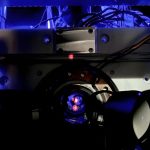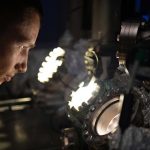Scientists develop breakthrough 2D device for quantum cooling at ultra-low temperatures
Engineers at EPFL have created an innovative device that can turn heat into electrical voltage at temperatures even colder than outer space.
This new technology...
Physicists unveil new technique to detect tiny defects in semiconductors
One of the challenges in creating smarter and more powerful electronics is analyzing the materials that make up these devices with extreme precision.
Physicists at...
Scientists use world’s coldest quantum detectors to search for dark matter
One of the greatest mysteries in science might be closer to being solved thanks to the coldest quantum detectors ever built.
Scientists estimate that about...
Scientists develop new method for high-speed, secure quantum communication
Scientists have made a major breakthrough in quantum communication by creating a new method to transmit information using particles of light called qudits.
This advancement...
Scientists unravel the mystery of moon swirls: Hidden magma could be the key
Lunar swirls are bright, sinuous patterns on the moon’s surface that look like brushstrokes in an abstract painting.
These features, visible even with a backyard...
Scientists develop the world’s most precise atomic clock, pushing new frontiers in physics
In the quest for ultimate precision, scientists at JILA, a joint institution of the National Institute of Standards and Technology (NIST) and the University...
Scientists bring fresh perspectives to next-generation nuclear reactors
To combat climate change, the U.S. energy sector needs a major overhaul, and nuclear energy could play a crucial role in this transformation.
Nuclear energy...
Scientists uncover the sticky secrets of nuclear matter
When scientists collide heavy atomic nuclei together, they create a hot, fluid-like soup made of the building blocks of visible matter, called quarks and...
New discovery in flat electronic bands opens doors to advanced quantum materials
Researchers at Rice University, led by Qimiao Si, have made a groundbreaking discovery in quantum materials.
Their study, published in Nature Communications, predicts the existence...
Scientists unveil new way to control quantum states
Researchers at ETH Zurich have discovered a new method to control quantum states of single electron spins using electron currents with aligned spins.
This innovative...









